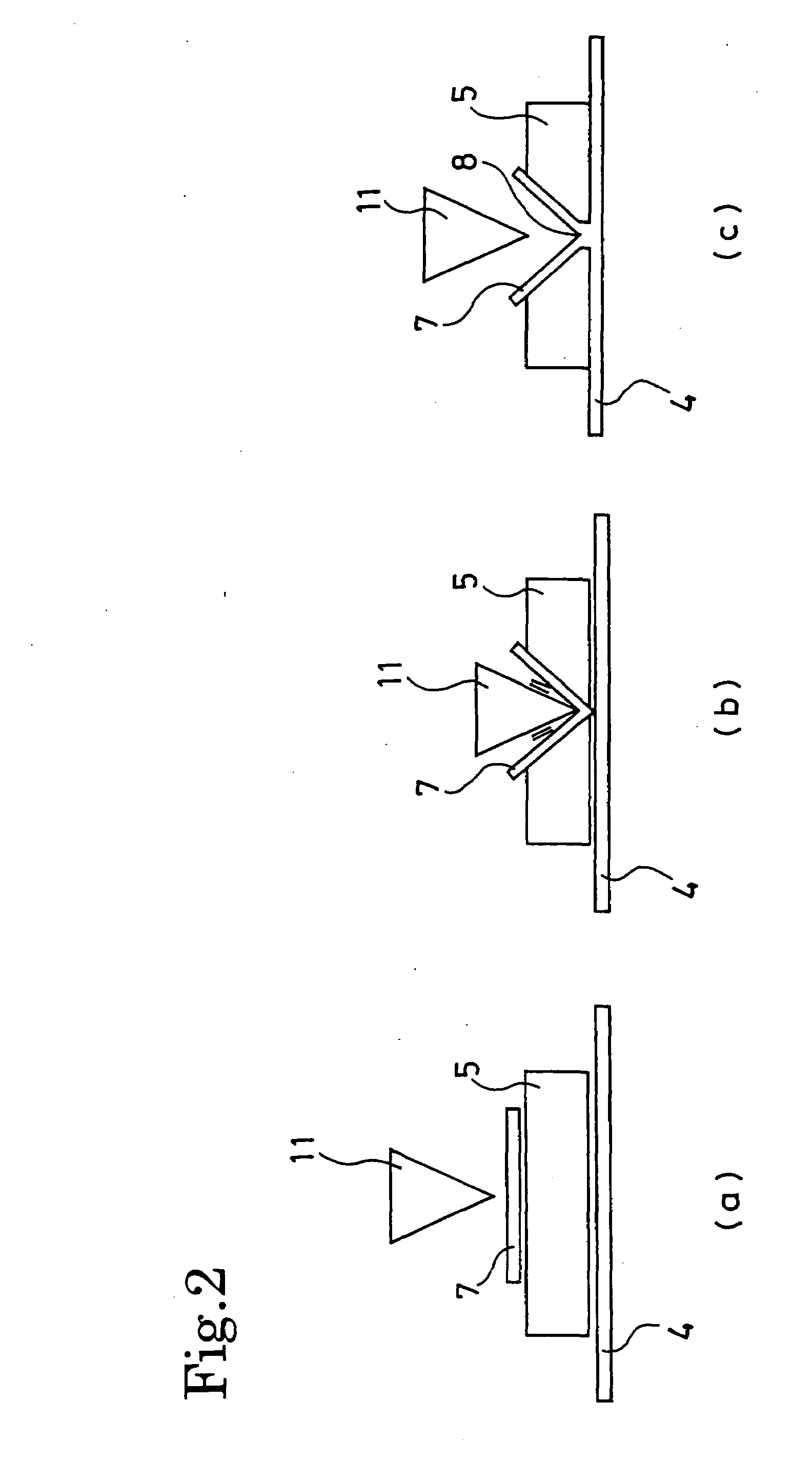Pneumatic tire and method of manufacturing the same
a pneumatic tire and tire body technology, applied in the field of pneumatic tires, can solve the problems of noise absorbing member dropping off from the inner surface of the tire, noise absorbing member affecting the operation of mounting the pneumatic tire, and difficulty in adjusting the traction angle, etc., to achieve good traction, good traction, and good traction
- Summary
- Abstract
- Description
- Claims
- Application Information
AI Technical Summary
Benefits of technology
Problems solved by technology
Method used
Image
Examples
examples
[0045]Pneumatic tires of Conventional Example and Examples 1 and 2 (tire size: 215 / 55R16) were prepared. In the pneumatic tire of Conventional Example, a noise absorbing member formed of a band-shaped urethane foam (a width of 150 mm by a thickness of 20 mm) was fixed to the inner surface of the tread portion across the entire circumference of the tire by using a rubber adhesive agent. On the other hand, in each of the pneumatic tires of Examples 1 and 2, while a resin layer formed of a thermoplastic elastomeric composition was formed on the entire region of the inner surface of the tire, a noise absorbing member formed of a band-shaped urethane foam (a width of 150 mm by a thickness of 20 mm) was disposed on the resin layer, on the inner side of the tread portion, across the entire circumference of the tire. Then, locking chips were disposed at intervals of approximately 200 mm each on the noise absorbing member along the tire circumferential direction. The locking chips were then ...
PUM
| Property | Measurement | Unit |
|---|---|---|
| temperature | aaaaa | aaaaa |
| fusing temperature | aaaaa | aaaaa |
| temperatures | aaaaa | aaaaa |
Abstract
Description
Claims
Application Information
 Login to View More
Login to View More - R&D
- Intellectual Property
- Life Sciences
- Materials
- Tech Scout
- Unparalleled Data Quality
- Higher Quality Content
- 60% Fewer Hallucinations
Browse by: Latest US Patents, China's latest patents, Technical Efficacy Thesaurus, Application Domain, Technology Topic, Popular Technical Reports.
© 2025 PatSnap. All rights reserved.Legal|Privacy policy|Modern Slavery Act Transparency Statement|Sitemap|About US| Contact US: help@patsnap.com



